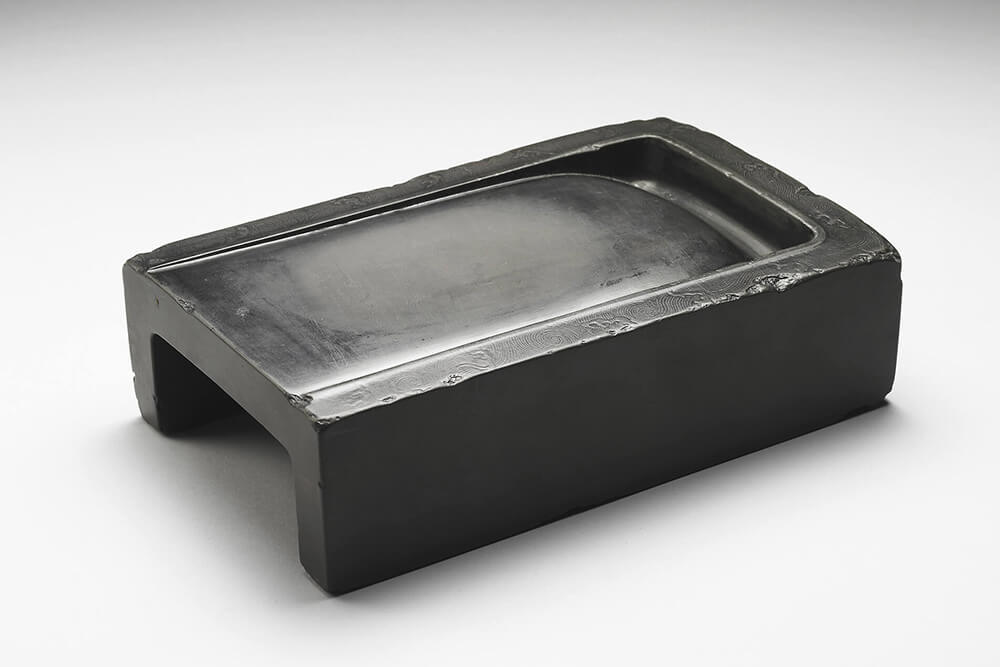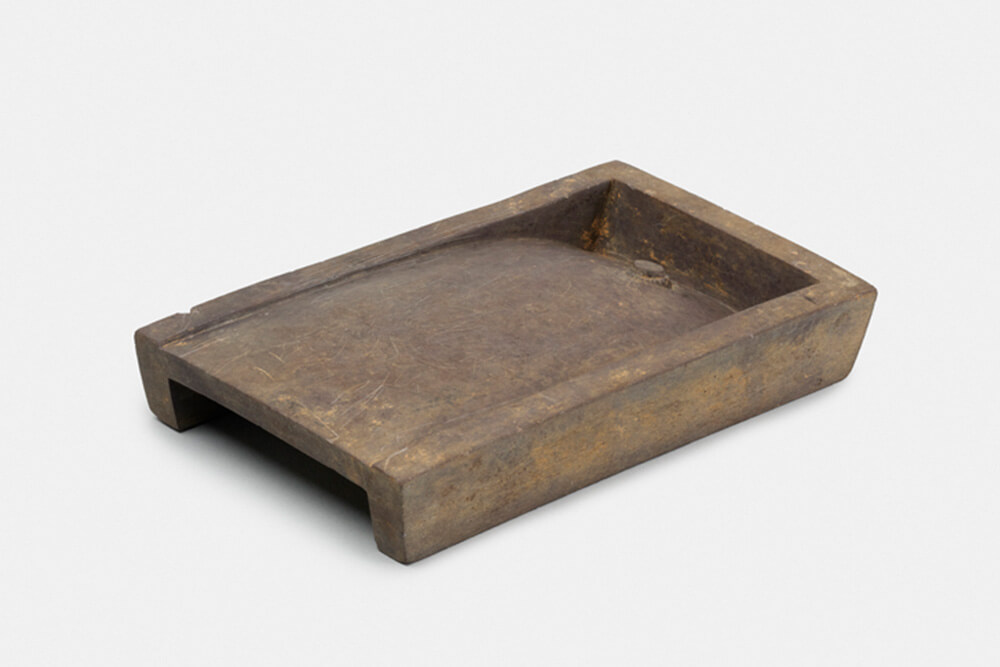The Maturation of Inkstone Styles
With the maturity of the imperial examination system during the Song Dynasty, a large group of scholars emerged in society. This extensive population of literati laid the foundation for the development of inkstones in the future. Prior to 1987, students in primary and secondary schools in Taiwan used brushes to write compositions and often used rectangular inkstones to grind ink. This flat-bottomed inkstone style originated from the "chao-shou inkstone" of the Song Dynasty, which featured a hollowed-out base. Would you like to know how those inkstones evolved?
Handle Inkstone
The handle inkstone was a popular style of inkstone during the Song Dynasty. It is characterized by a hollowed-out base, a steeply sloping ink reservoir, prominent edges, and a flat shape. Its predecessor was the Feng Zi inkstone (inkstone in the shape of Chinese character "feng"). During the Ming Dynasty, the handle inkstone had a smooth surface, and the base was often intentionally carved into a cylindrical shape to preserve the distinctive stone-eye feature.
- Babana-white inkstone with wave pattern
- Attributed to Song dynasty (960-1279)
- Handle inkstone with flame orb decoration
- Song dynasty (960-1279)





